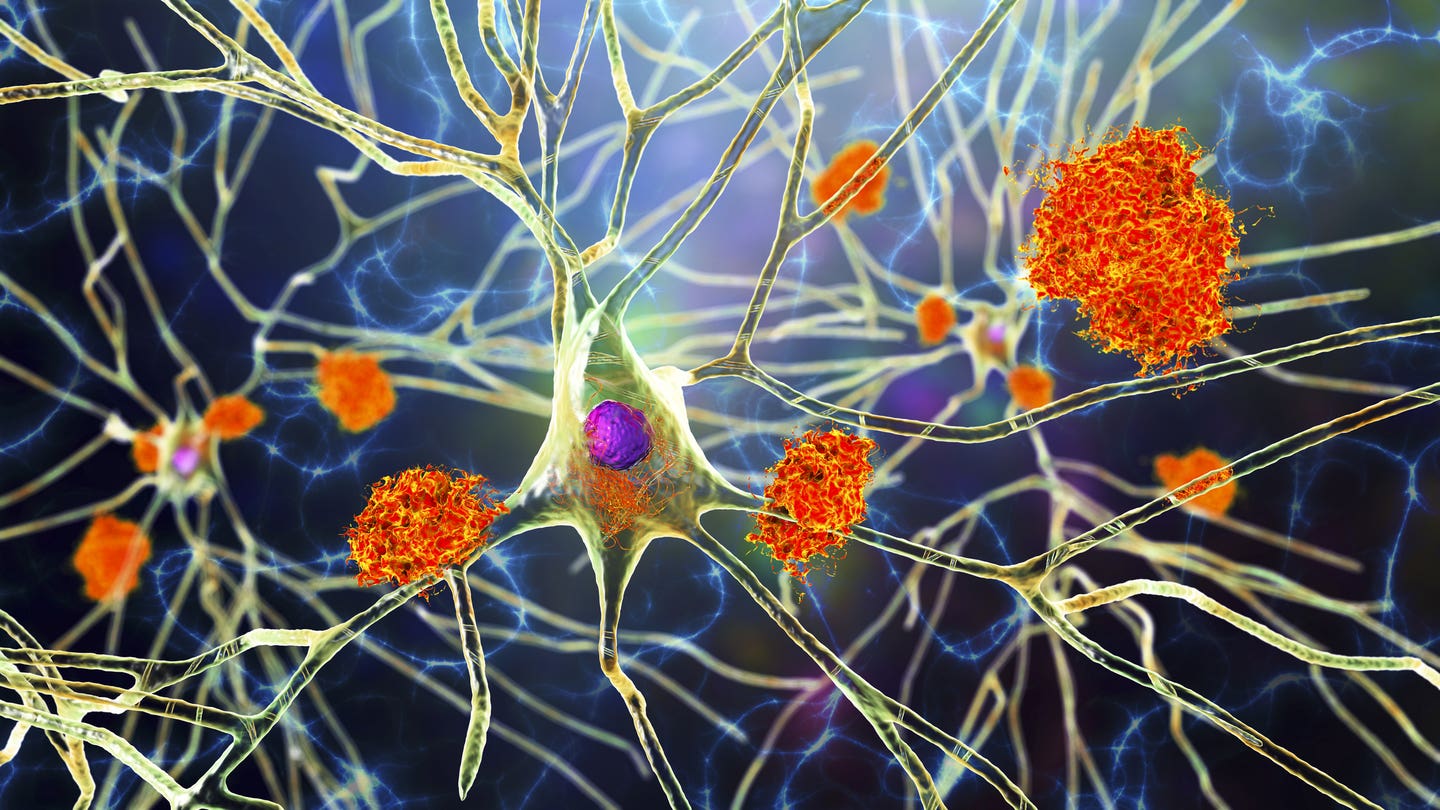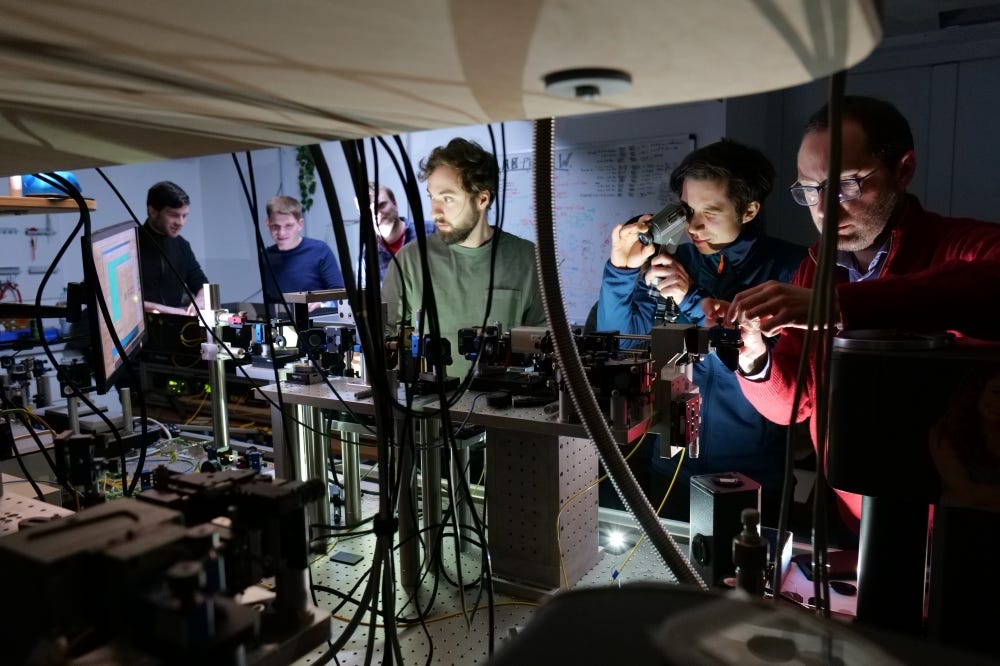Researchers discover over 200 hidden proteins tied to Alzheimer’s and cognitive decline
Scientists discover hundreds of misfolded proteins tied to age-related memory loss—revealing a hidden cause of cognitive decline.

A Johns Hopkins study has uncovered over 200 misfolded proteins linked to memory loss in aging rats, pointing to new treatment paths. (CREDIT: Dr_Microbe / Getty Images)
Cognitive decline is a growing concern in aging societies, often impacting memory, attention, and decision-making. For millions of older adults, this decline brings emotional stress and a loss of independence. While conditions like Alzheimer’s disease are widely known, many cases of age-related memory loss occur even without diagnosed neurodegeneration. Understanding the root causes of this decline has become a top scientific priority.
Recent findings from researchers at Johns Hopkins University suggest that the story goes far beyond the traditional culprits—A-beta and tau proteins. Instead, the decline may be tied to a broader and largely invisible process: subtle misfolding of many other proteins that don’t form detectable plaques but still disrupt brain function.
Protein Shape, Not Just Plaques, May Hold the Key
In a study published in Science Advances, researchers led by Stephen Fried used a cutting-edge tool called limited proteolysis mass spectrometry (LiP-MS) to explore protein shapes in the brains of aged rats. LiP-MS can detect slight changes in protein folding across thousands of proteins, giving scientists a window into the structure of these molecules inside the brain.
Fried and his team examined 17 two-year-old rats—an age roughly equivalent to a person in their 70s. The rats came from the same genetic pool and environment. When tested for memory and learning in a water maze, seven showed signs of cognitive decline, while ten performed like much younger rats.
By analyzing hippocampal tissue—where spatial memory and learning are processed—the scientists measured over 2,500 proteins. They focused on how the proteins' shapes differed between rats with healthy memory and those showing signs of impairment. More than 200 proteins showed structural shifts in the impaired group, yet remained normal in the resilient ones.
“These proteins weren’t forming clumps or amyloids that are easy to spot under a microscope,” said Fried, an assistant professor of chemistry. “They were still soluble, but their shapes had changed in a way that could interfere with how the brain works.”
Related Stories
- Researchers discover four major health pathways that lead to Alzheimer’s Disease
- Breakthrough study links vaccines to reduced Alzheimer’s risk
- Scientists identify two enzymes driving memory loss in Alzheimer’s disease
Cognitive-Linked Structural Changes in Brain Proteins
The researchers labeled these shifts as cognition-associated structural changes, or CASCs. Unlike amyloid proteins, which form dense plaques, these misfolded proteins remain dispersed and soluble—making them hard to detect with traditional tools.
One striking finding was that these altered proteins were often nonrefoldable, meaning they couldn’t return to their original shape after being unfolded. That made them functionally compromised. “This suggests that conformational changes, not just large aggregates, can affect brain health,” said Fried.
In fact, CASC proteins were far more likely to be nonrefoldable than other proteins that didn’t differ between groups. This inability to refold seemed more strongly linked to cognitive decline than other chemical modifications like oxidation or phosphorylation.
The results shift focus away from just two toxic proteins and toward a broader breakdown in how proteins are maintained in the brain as it ages.
The Hidden Role of Proteostasis in Aging
Proteins must fold into precise shapes to do their jobs, and the body has systems in place—called the proteostasis network—to help them fold, stay stable, and be cleared if damaged. This network includes chaperone proteins, degradation pathways, and quality-control systems. But as we age, this machinery weakens.
With time, proteins can misfold due to damage, stress, or changes in how cells manage them. In younger organisms, misfolded proteins are usually flagged and destroyed. However, the study suggests that many aging-related misfolded proteins evade these protective systems, remaining active and disruptive.
Fried explained that while amyloids dominate much of the discussion around neurodegeneration, his team’s work shows that there is a “hidden layer” of misfolded proteins—ones that don’t form plaques but still impair brain function.
Past studies had already shown that individual proteins like phosphoglycerate kinase and enolase adopt altered shapes in aging brains. But this new work is the first to map such misfolding across the entire neuroproteome in a region as critical as the hippocampus.
Why the Hippocampus Matters Most
The hippocampus is one of the most important brain areas for memory and learning. While it doesn’t lose many cells during aging, its circuits show functional changes in older adults. These shifts are linked to poor memory performance, even when brain structure appears normal.
Using a well-established rat model, the research team focused on aged rats categorized as either cognitively impaired or unimpaired. This approach isolated the proteins most associated with memory performance rather than general aging. Both groups of rats were the same age, but their cognitive abilities were markedly different.
The unimpaired rats, despite their age, performed complex memory tasks at a level similar to young rats. They also retained adaptive molecular and circuit-level features known to support memory. This contrast helped the scientists identify which protein shape changes aligned specifically with memory decline, not just age.
A Path to New Treatments
By identifying hundreds of previously overlooked protein changes in the aging brain, the study offers a broader view of what causes cognitive decline. It also opens doors to potential therapies that don't rely solely on targeting amyloid plaques.
“What we’re seeing is just the tip of the iceberg,” Fried said. “We believe many proteins misfold in ways that haven’t been visible to us until now.”
His team plans to use advanced imaging to study the exact structural changes in these proteins. Their goal is to better understand how these proteins affect brain cells and how they avoid the cell’s usual defenses.
This research may one day help doctors predict who is most likely to experience age-related memory problems, based not on visible brain damage, but on subtle molecular shifts that happen long before symptoms appear.
"A lot of us have experienced a loved one or a relative who has become less capable of doing those everyday tasks that require cognitive abilities,” Fried said. “Understanding what's physically going on in the brain could lead to better treatments and preventive measures."
Note: The article above provided above by The Brighter Side of News.
Like these kind of feel good stories? Get The Brighter Side of News' newsletter.



